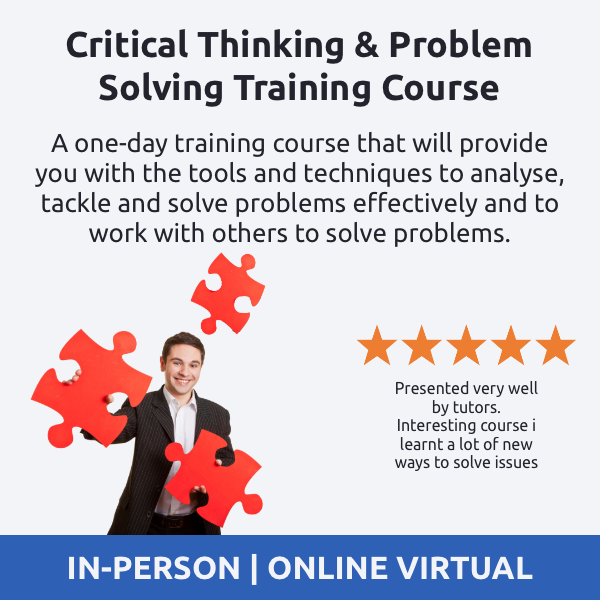Background
Hurson’s Productive Thinking Model – developed by Canadian author Tim Hurson is a structured approach to solving problems or generating creative ideas. It encourages the use of a structured framework to help solve problems and issues and was published in his book Think Better.
Being creative in probing solving allows you to understand issues surrounding problems and will help you to find the best solution.
How Can Hurson’s Productive Thinking Model Help You?
Hurson’s Productive Thinking Model can help you to be more creative when it comes to problem-solving. It’s a framework (not a technique) that uses a number of other techniques within it such as brainstorming or lateral-thinking and these are applied at different stages of the process.
Hurson’s Productive Thinking Model can be used by individuals, teams, businesses or anyone that needs to solve problems creatively.
The 6 Steps of Hurson’s Productive Thinking Model
The model has 6 steps or is a 6 step framework to follow. The six steps to Hurson’s Productive Thinking Model are:
- What’s going on?
- What is success?
- What is the question?
- Generate answers
- Forge the solution
- Align resources

What’s Going On?
You first need to understand what the problem is that you want to deal with. This might be just one problem or a number of different problems. You can use brainstorming here to identify a long list of problems should you need to. Ask questions such as:
- What are the/my major bugbears?
- What impact is it having?
- What’s the detail of the problem?
- Who’s involved or causing the problem?
- What does good look like?
What’s Success?
This is where you clearly define what got or better looks like. It’s painting a vivid picture of what success would look like should the problem be solved. You could use the model described in Hurson’s book ‘Think Better: An Innovator’s Guide to Productive Thinking’ called DRIVE:
- Do – What do you want the solution to the problem to do?
- Restrictions – What should the solution not do
- Investment – What’s available to help you, how much can you invest (time and money)
- Values – What values should the solution stand by/respect
- Essential Outcomes – How will you measure the success of the solution
What is the Question?
At this stage, you begin to look at a whole range of questions that if answered can solve the problem. The stage frames the challenge by turning it into a question. To do this look at the information you have gathered then think about the questions that will need to be answered to achieve the target. You open questions such as How.
For example, your target might be to have more sales. Your questions might then be ‘How can we get more sales?’, ‘How can we find more opportunities to get more sales?’ or ‘How can we increase our customer base to create more sales opportunities?’
Generate Answers
The next logical step is then to find answers to the questions you asked. You can use brainstorming here for example to generate lots of answers to each of the questions posed.
Forge the Solution
Once you have lots of answers you can start to think about the best answers. Use something like a decision making grid to help here. Once you have your best answer, develop it further. Drill down into the detail of the answer and start to think about how it potentially could be achieved. Begin to list the steps required to get to success.
Align Resources
This is where you begin to build a plan to achieve the outcome. You need to start to think about the resources you need to achieve the outcome. Use a tool such as an action plan or a project plan to put your plan together.
Further Learning
We hope you find this framework useful to help with your future problem-solving. If you would like to know more, take a look t our Critical Thinking and Problem-Solving Training Course where we cover Hurson’s Productive Thinking Model in more detail.



